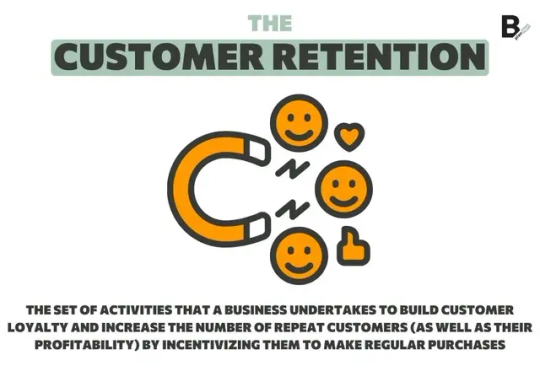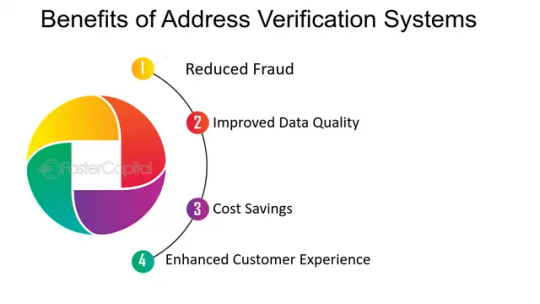Don't wanna be here? Send us removal request.
Text
The Role of Accuracy in Building Customer Trust and Retention
In an increasingly competitive business landscape, customer trust and retention are crucial for long-term success. Accuracy plays a vital role in ensuring customers receive reliable, consistent, and high-quality service. Whether it is accurate data, precise communication, or dependable product and service delivery, maintaining accuracy fosters trust and strengthens customer relationships.
This article explores the impact of accuracy on customer trust and retention, along with best practices for ensuring precision in business operations.

The Importance of Accuracy in Customer Experience
Enhancing Credibility and Reliability
Customers are more likely to trust businesses that provide accurate information and deliver on their promises. When businesses consistently maintain accuracy, they establish a reputation for reliability and professionalism.
Reducing Errors and Miscommunication
Errors in customer communication, billing, or service delivery can lead to frustration and dissatisfaction. Ensuring accuracy in these areas minimizes disputes and strengthens customer confidence in the brand.
Building Brand Reputation
A business known for precision and attention to detail gains a competitive edge. Customers are more likely to recommend brands that consistently meet their expectations with accurate information and services.
How Accuracy Affects Customer Retention
Strengthening Customer Loyalty
Customers value businesses that provide consistent and error-free experiences. When accuracy is maintained in interactions, customers are more likely to return and remain loyal to the brand.
Minimizing Refunds and Complaints
Inaccurate orders, billing errors, and misrepresented products can lead to customer dissatisfaction and increased refund requests. Maintaining precision reduces such issues and enhances retention rates.
Improving Customer Support Efficiency
Accurate customer records, transaction histories, and order details allow customer support teams to provide quick and effective resolutions. This results in a smoother experience for customers and strengthens their trust.
Key Areas Where Accuracy Matters
Product Descriptions and Pricing
Ensuring that product descriptions, pricing, and specifications are correct prevents confusion and builds transparency with customers.
Order Processing and Fulfillment
Accurate order fulfillment ensures customers receive the correct products on time, reducing dissatisfaction and return rates.
Billing and Invoicing
Errors in billing can damage customer trust. Accurate invoicing and transaction details help maintain credibility and prevent disputes.
Customer Data Management
Maintaining up-to-date and accurate customer data allows businesses to personalize interactions and provide better service.
Strategies to Ensure Accuracy in Business Operations
Implementing Data Validation Systems
Using automated data validation tools helps prevent errors in customer records, order processing, and financial transactions.
Training Employees on Accuracy Standards
Educating employees on the importance of accuracy ensures that they follow best practices in data entry, customer interactions, and service delivery.
Utilizing Quality Control Measures
Regular audits and quality control processes help identify and rectify errors before they impact customers.
Leveraging Technology for Accuracy
AI-driven tools, automated verification systems, and error detection software enhance accuracy in various business functions.
The Role of Transparency in Accuracy
Communicating Updates and Corrections
If an error occurs, promptly informing customers and taking corrective measures strengthens trust.
Setting Realistic Expectations
Providing clear and accurate expectations about services, delivery times, and policies ensures a positive customer experience.
Offering Reliable Customer Support
A responsive customer support team that provides accurate information reassures customers and resolves concerns effectively.
Future Trends in Accuracy and Customer Trust
AI-Powered Accuracy Enhancements
Artificial intelligence is improving accuracy in data management, customer insights, and automated verification processes.
Blockchain for Data Integrity
Blockchain technology ensures transparency and accuracy in transactions, boosting customer trust.
Enhanced Personalization Through Accurate Data
Businesses are leveraging accurate customer data to offer personalized experiences, strengthening retention efforts.
Conclusion
Accuracy is a fundamental pillar of customer trust and retention. Businesses that prioritize precision in data, communication, and service delivery create a reliable and trustworthy brand image. By implementing validation systems, leveraging technology, and maintaining transparency, businesses can enhance customer experiences, foster loyalty, and achieve long-term success.
youtube
SITES WE SUPPORT
HIPAA Complaint Address Verification API and Direct Mail Automation Software – Wix
SOCIAL LINKS
Facebook
Twitter
LinkedIn
Instagram
Pinterest
0 notes
Text
How Secure Printing Can Protect Sensitive Information
In today’s digital era, businesses and organizations handle vast amounts of sensitive information, ranging from financial records to personal customer data. While cybersecurity measures often focus on digital threats, the security of printed documents is equally important. Secure printing solutions play a crucial role in protecting confidential information from unauthorized access, loss, and misuse.
This article explores the importance of secure printing and best practices to ensure sensitive information remains protected throughout the printing process.

The Risks of Unsecured Printing
Unauthorized Access to Confidential Documents
Printed documents containing sensitive information can be accessed by unauthorized individuals if left unattended at a printer or improperly stored.
Data Breaches and Information Theft
Without secure printing protocols, businesses risk exposing confidential data, leading to compliance violations and potential legal consequences.
Human Errors and Negligence
Employees may accidentally print documents to the wrong printer or leave sensitive paperwork in shared spaces, increasing security risks.
Best Practices for Secure Printing
Implementing User Authentication
Requiring employees to authenticate before printing ensures that only authorized individuals access confidential documents.
Using Secure Print Release Features
Secure print release options, such as PIN codes or keycard authentication, prevent unauthorized retrieval of printed documents.
Encrypting Print Jobs
Encrypting print data before transmission ensures that information remains protected while traveling between devices.
Monitoring and Auditing Print Activity
Tracking print logs and user activity helps detect unauthorized printing and mitigate security risks.
Advanced Secure Printing Technologies
Cloud-Based Secure Printing
Cloud-based solutions enable businesses to manage and monitor print jobs remotely while ensuring data security.
Biometric Authentication
Fingerprint or facial recognition authentication enhances security by restricting access to authorized personnel only.
Data Redaction and Masking
Secure printing solutions can automatically redact or mask sensitive data to prevent exposure of confidential information.
Secure Printing for Different Industries
Healthcare and Patient Data Protection
Hospitals and clinics must comply with regulations such as HIPAA by securing printed patient records and medical documents.
Financial Institutions and Regulatory Compliance
Banks and financial institutions rely on secure printing to protect customer account details and financial statements.
Government and Legal Sectors
Government agencies and legal firms handle classified information that requires strict printing security protocols.
The Role of Employee Training in Secure Printing
Educating Staff on Print Security Policies
Employees should be trained on secure printing practices to prevent accidental data breaches.
Encouraging Responsible Document Handling
Proper disposal and storage of printed documents minimize the risk of unauthorized access.
Enforcing Secure Printing Guidelines
Organizations should establish clear policies on printing sensitive documents and enforce compliance.
Future Trends in Secure Printing
AI-Powered Print Security
Artificial intelligence enhances print security by identifying suspicious activities and preventing data leaks.
Blockchain for Document Verification
Blockchain technology ensures document integrity and authenticity, reducing fraud risks.
Increased Use of Eco-Friendly Secure Printing Solutions
Sustainable printing methods improve security while minimizing environmental impact.
Conclusion
Secure printing is essential for protecting sensitive information from unauthorized access and potential breaches. By implementing authentication measures, encryption, monitoring, and advanced printing technologies, businesses can enhance document security and regulatory compliance. Prioritizing secure printing practices not only safeguards confidential data but also strengthens trust and operational efficiency within organizations.
youtube
SITES WE SUPPORT
HIPAA Complaint Address Verification API and Direct Mail Automation Software – Wix
SOCIAL LINKS
Facebook
Twitter
LinkedIn
Instagram
Pinterest
0 notes
Text
Boost Customer Satisfaction with a Reliable Address Verification API
Customer satisfaction is a key factor in the success of any business, and ensuring accurate deliveries plays a crucial role in achieving it. One of the most effective ways to prevent failed deliveries, reduce errors, and enhance the customer experience is by implementing a reliable Address Verification API. This technology helps businesses validate and standardize addresses in real-time, ensuring accurate shipments and improving overall operational efficiency.
This article explores how an Address Verification API enhances customer satisfaction and provides best practices for businesses looking to implement this solution.

The Role of an Address Verification API in Customer Experience
Preventing Failed Deliveries
An Address Verification API checks and corrects addresses before shipments are sent, minimizing the chances of packages being delayed or returned.
Reducing Manual Data Entry Errors
By automating the address verification process, businesses eliminate human errors that often result in incorrect shipments and dissatisfied customers.
Improving Checkout Experience
For e-commerce businesses, an Address Verification API simplifies the checkout process by automatically suggesting correct addresses, leading to a seamless shopping experience.
Enhancing Operational Efficiency
Verifying addresses in real time allows businesses to optimize logistics, reduce shipping costs, and improve delivery accuracy.
Key Benefits of Using an Address Verification API
Increased Delivery Success Rates
Accurate addresses mean fewer missed deliveries, reducing reshipping costs and improving the customer experience.
Cost Savings for Businesses
Reducing returned shipments saves money on additional shipping fees, labor costs, and administrative work.
Enhanced Customer Trust
Providing customers with accurate delivery ensures they receive their orders on time, fostering trust and brand loyalty.
Better Data Management
A reliable Address Verification API helps businesses maintain a clean and standardized database, improving analytics and decision-making.
Best Practices for Implementing an Address Verification API
Choose an API with Global Coverage
If your business operates internationally, selecting an API that verifies addresses across multiple countries is crucial.
Ensure Seamless Integration
An Address Verification API should easily integrate with your existing CRM, e-commerce platform, or logistics management system.
Regularly Update Address Databases
Using an API with regularly updated address data ensures accuracy and prevents outdated information from affecting deliveries.
Optimize for User Experience
Ensure that the API provides real-time address suggestions during checkout to streamline the process for customers.
How Different Industries Benefit from an Address Verification API
E-Commerce and Retail
Online retailers use Address Verification API solutions to reduce cart abandonment rates, improve customer satisfaction, and decrease shipping errors.
Logistics and Shipping
Shipping companies rely on address verification to ensure on-time deliveries and optimize supply chain operations.
Financial Services
Banks and financial institutions use address verification to prevent fraud and maintain compliance with regulations.
Healthcare and Insurance
Accurate address data ensures timely communication and delivery of essential documents to patients and policyholders.
Future Trends in Address Verification Technology
AI-Powered Address Validation
Machine learning and artificial intelligence enhance address verification by predicting and correcting errors with greater accuracy.
Increased Use of Geolocation Data
Integrating geolocation data with address verification improves accuracy, especially in regions with complex address structures.
Enhanced Security Measures
Businesses are implementing additional security layers within address verification systems to prevent fraudulent transactions.
Expansion of Address Verification APIs
As global commerce continues to grow, more businesses are adopting Address Verification API solutions to ensure seamless transactions and deliveries.
Conclusion
Implementing a reliable Address Verification API is an essential step in boosting customer satisfaction, reducing operational costs, and improving business efficiency. By preventing failed deliveries, reducing errors, and streamlining processes, businesses can enhance their reputation and build lasting relationships with their customers. Choosing the right API and following best practices will ensure maximum benefits and long-term success in a competitive market.
youtube
SITES WE SUPPORT
HIPAA Complaint Address Verification API and Direct Mail Automation Software – Wix
SOCIAL LINKS
Facebook
Twitter
LinkedIn
Instagram
Pinterest
0 notes
Text
Ensuring Compliance: Best Practices for HIPAA Compliant Print and Mail
In the healthcare industry, protecting patient information is a top priority. The HIPAA Compliant Print and Mail process ensures that sensitive medical records and other healthcare communications remain secure and confidential. Non-compliance with HIPAA regulations can lead to severe penalties, legal issues, and a loss of trust among patients. Implementing best practices for HIPAA Compliant Print and Mail is crucial to maintaining compliance and safeguarding sensitive information.
This article outlines essential best practices to ensure secure and compliant print and mail operations in the healthcare sector.

Understanding HIPAA Compliance in Print and Mail
What is HIPAA Compliance?
The Health Insurance Portability and Accountability Act (HIPAA) establishes national standards for protecting sensitive patient data. Healthcare providers, insurers, and their business associates must comply with HIPAA regulations to prevent unauthorized access to personal health information (PHI).
Why HIPAA Compliant Print and Mail Matters
Traditional mail processes can pose security risks if not managed properly. Implementing HIPAA Compliant Print and Mail safeguards patient confidentiality while ensuring timely and accurate communication with patients and stakeholders.
Key Best Practices for HIPAA Compliant Print and Mail
Secure Document Handling
Ensuring that printed documents containing PHI are handled with strict security protocols prevents unauthorized access or loss of sensitive data.
Controlled Access to PHI
Restricting access to confidential healthcare documents to authorized personnel reduces the risk of data breaches and enhances compliance.
Data Encryption and Protection
Encrypting data during the printing and mailing process ensures that patient information remains secure from interception or unauthorized use.
Audit Trails and Tracking
Maintaining audit logs of all printed and mailed documents provides traceability and accountability, essential for HIPAA compliance.
Implementing Secure Printing and Mailing Processes
Use of Certified HIPAA Compliant Vendors
Working with trusted vendors who specialize in HIPAA Compliant Print and Mail ensures adherence to regulatory standards and minimizes compliance risks.
Implementing Mail Security Measures
Using tamper-proof envelopes, secure delivery methods, and tracking systems enhances the security of mailed healthcare communications.
Employee Training and Awareness
Educating staff on HIPAA regulations and secure mail handling procedures minimizes errors and strengthens compliance efforts.
Regular Compliance Audits
Conducting periodic audits of print and mail operations helps identify potential vulnerabilities and ensures continued compliance with HIPAA requirements.
Technological Advancements in HIPAA Compliant Print and Mail
Automated Mailing Solutions
Automating the mailing process reduces manual errors, improves efficiency, and enhances the security of mailed documents.
Digital Mail Integration
Integrating digital communication options, such as secure electronic delivery of healthcare documents, complements traditional mailing methods and adds an extra layer of security.
Cloud-Based Print Management
Utilizing cloud-based print management solutions allows for secure document storage, controlled access, and enhanced data protection.
Future Trends in HIPAA Compliant Print and Mail
AI and Machine Learning in Secure Mail Processing
Advanced technologies help detect anomalies, streamline processes, and enhance the accuracy of printed and mailed documents.
Enhanced Regulatory Compliance Solutions
As regulations evolve, businesses must stay updated with the latest compliance solutions to ensure ongoing adherence to HIPAA standards.
Sustainable and Secure Mailing Practices
Eco-friendly materials and digital alternatives are becoming increasingly popular while maintaining compliance with privacy and security requirements.
Conclusion
Ensuring HIPAA Compliant Print and Mail is essential for maintaining patient confidentiality, regulatory compliance, and operational efficiency in healthcare organizations. By implementing secure document handling, controlled access, encryption, and technological advancements, businesses can minimize risks and improve their compliance strategies. Investing in secure and efficient print and mail solutions protects patient information while fostering trust and reliability in the healthcare industry.
youtube
SITES WE SUPPORT
HIPAA Complaint Address Verification API and Direct Mail Automation Software – Wix
SOCIAL LINKS
Facebook
Twitter
LinkedIn
Instagram
Pinterest
0 notes
Text
Boost Your ROI with the Right Direct Mail Automation Software
In today’s digital age, businesses are constantly seeking innovative ways to enhance marketing campaigns and drive revenue. While digital marketing dominates, Direct Mail Automation Software has proven to be a highly effective tool for maximizing return on investment (ROI). Automating direct mail campaigns saves time, reduces costs, and improves targeting, leading to better customer engagement and increased conversions.
This article explores how Direct Mail Automation Software can help businesses improve ROI and provides essential tips on choosing the right solution.

The Role of Direct Mail in Modern Marketing
Why Direct Mail Still Matters
Despite the rise of digital marketing, direct mail continues to deliver strong results. Personalized, tangible mail has a lasting impact on recipients and is often more engaging than digital ads.
Challenges of Traditional Direct Mail
Traditional direct mail campaigns can be time-consuming and costly, requiring manual effort for printing, addressing, and mailing. Without automation, businesses risk inefficiencies and lower ROI.
How Direct Mail Automation Software Enhances ROI
Streamlining the Mailing Process
Automation eliminates manual tasks such as printing and mailing, allowing businesses to execute campaigns faster and more efficiently.
Improved Targeting and Personalization
With data-driven insights, Direct Mail Automation Software enables businesses to personalize messages based on customer preferences and behaviors, leading to higher engagement and response rates.
Cost Efficiency
By optimizing mailing lists and automating workflows, businesses can reduce wasted resources, ensuring mail reaches the right audience without unnecessary expenses.
Integration with Digital Marketing Strategies
Integrating Direct Mail Automation Software with email marketing, social media, and CRM platforms creates a seamless omnichannel experience, amplifying campaign effectiveness.
Key Features to Look for in Direct Mail Automation Software
Easy-to-Use Interface
A user-friendly dashboard simplifies the process of designing and launching direct mail campaigns.
Data Analytics and Reporting
Robust analytics tools help track campaign performance, measure ROI, and refine future strategies.
Address Verification and List Management
Automated address verification reduces undelivered mail and improves accuracy, ensuring maximum reach and cost efficiency.
Customization and Personalization Options
Advanced customization tools allow businesses to create targeted, personalized mail pieces that resonate with recipients.
Scalable Solutions
Businesses should select software that grows with their needs, whether they’re a small business or a large enterprise handling high mail volumes.
Steps to Implementing Direct Mail Automation for Maximum ROI
Define Your Campaign Goals
Clearly outline the objectives of your direct mail campaign, whether it’s lead generation, customer retention, or brand awareness.
Segment Your Audience
Utilize customer data to segment your audience and create highly targeted mailing lists for better engagement.
Design Compelling Mail Pieces
Ensure that your mail designs align with your brand identity and feature clear calls to action that drive responses.
Automate Workflow and Integration
Integrate Direct Mail Automation Software with CRM and marketing platforms to streamline operations and improve efficiency.
Track and Optimize Performance
Regularly analyze campaign metrics to identify successful strategies and make data-driven adjustments for continuous improvement.
The Future of Direct Mail Automation
AI-Powered Personalization
The use of artificial intelligence in direct mail is enhancing personalization, ensuring each recipient gets highly relevant content.
Sustainability in Direct Mail
Eco-friendly mailing options, such as recycled materials and optimized mailing routes, are becoming a priority for businesses.
Increased Adoption Across Industries
More industries are leveraging Direct Mail Automation Software to enhance customer engagement, from e-commerce to healthcare and financial services.
Conclusion
Investing in Direct Mail Automation Software is a strategic move for businesses looking to maximize their marketing ROI. By streamlining processes, improving targeting, and integrating with digital strategies, companies can achieve higher engagement and cost-effective results. Choosing the right software ensures that direct mail remains a powerful, data-driven marketing tool that delivers tangible outcomes.
youtube
SITES WE SUPPORT
HIPAA Complaint Address Verification API and Direct Mail Automation Software – Wix
SOCIAL LINKS
Facebook
Twitter
LinkedIn
Instagram
Pinterest
1 note
·
View note